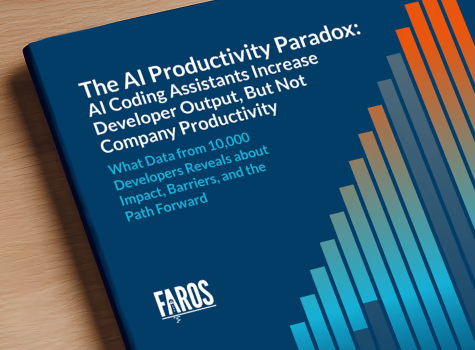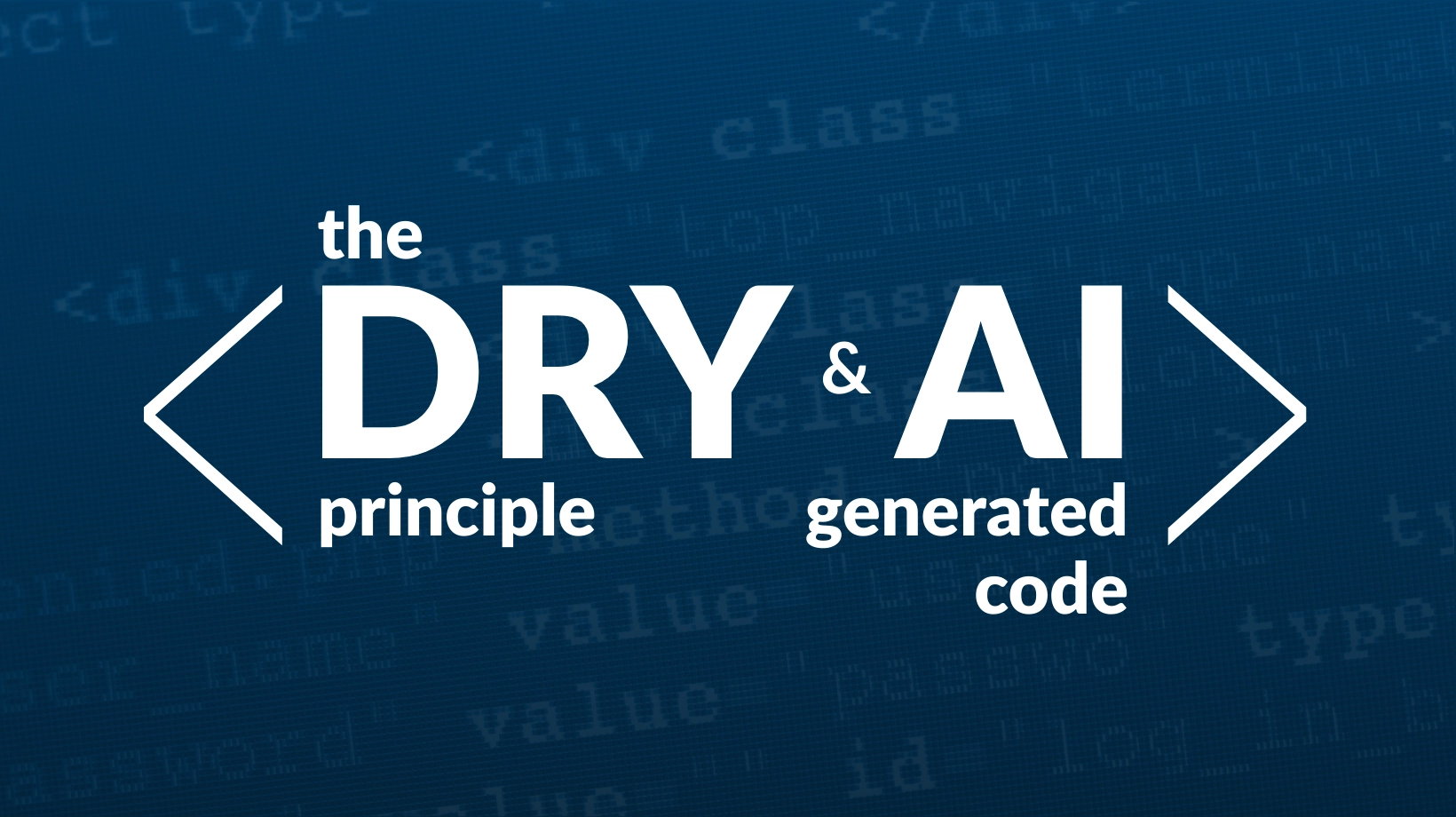GitHub Copilot vs Amazon Q: The Only Real Enterprise Bakeoff Results
Based on real telemetry from 430+ engineers at a leading data protection company
When a data protection and cyber resilience company needed to prove the ROI of AI coding assistants before approving enterprise licenses, they didn't rely on vendor claims or marketing materials. Instead, they conducted something almost unheard of in the industry: a rigorous, data-driven bakeoff between GitHub Copilot and Amazon Q Developer (formerly CodeWhisperer).
The results? GitHub Copilot delivered 2x higher adoption, 2x better acceptance rates, and 12% higher developer satisfaction—ultimately saving developers an extra 3 hours per week compared to Amazon Q.
Here's what happened when 430 engineers put both tools to the test in real enterprise conditions.
The Challenge: Proving AI Assistant ROI Before Enterprise Rollout
Unlike many organizations that adopt AI coding assistants based on enthusiasm or vendor promises, this data protection company took a methodical approach. With 430 engineers and enterprise security requirements, they needed concrete evidence that AI coding assistants would deliver measurable business value.
"We required a data-driven evaluation of Copilot vs. CodeWhisperer," explained the engineering leadership team. "Our security and compliance requirements meant we couldn't afford to make the wrong choice."
Working with a strategic consulting firm and using a combination of experience sampling and SDLC telemetry, they designed a controlled pilot program that would provide the definitive answer: Which AI coding assistant actually delivers better results for enterprise development teams?
{{cta}}
The Methodology: Real Enterprise Conditions, Not Lab Tests
The bakeoff was not conducted in an isolated lab environment with artificial tasks.
Instead, it used:
- Real enterprise codebase: Complex, brownfield projects with existing technical debt
- Actual development workflows: Code review processes, testing pipelines, and deployment dependencies
- Enterprise security constraints: Data protection requirements and compliance considerations
- Mixed experience levels: Engineers from junior to senior, across different technology stacks
- Production-ready tasks: Features, bug fixes, and maintenance work that directly impacted customer deliverables
Faros AI, their software engineering intelligence platform, ingested telemetry from both pilot groups and presented results through pre-built dashboards that tracked adoption, usage, satisfaction, and downstream productivity impacts.
The Results: GitHub Copilot's Clear Enterprise Advantage
Adoption and Usage Metrics
The first indicator of tool effectiveness came from actual usage patterns:
GitHub Copilot Group:
- Adoption Rate: 78% of developers actively used the tool
- Daily Usage: Average 4.2 hours of active assistance per developer
- Feature Utilization: High engagement with code completion, chat, and inline suggestions
Amazon Q Group:
- Adoption Rate: 39% of developers actively used the tool
- Daily Usage: Average 2.1 hours of active assistance per developer
- Feature Utilization: Limited primarily to basic code completion
Verdict: GitHub Copilot achieved 2x higher adoption with developers naturally gravitating toward more consistent usage.
|
GitHub Copilot |
Amazon Q |
| Adoption Rate |
78% of developers actively used the tool |
39% of developers actively used the tool |
| Daily Usage |
Average 4.2 hours of active assistance per developer |
Average 2.1 hours of active assistance per developer |
| Feature Utilization |
High engagement with code completion, chat, and inline suggestions |
Limited primarily to basic code completion |
Adoption and usage comparison of GitHub Copilot vs Amazon Q
Acceptance and Integration Rates
Beyond adoption, the quality of AI suggestions determined real productivity impact:
GitHub Copilot:
- Acceptance Rate: 22% of suggestions accepted and kept in final code
- Code Integration: 89% of accepted code remained unchanged through code review
- Context Accuracy: Strong performance with complex business logic and existing patterns
Amazon Q:
- Acceptance Rate: 11% of suggestions accepted
- Code Integration: 67% of accepted code required modification during review
- Context Accuracy: Better suited for greenfield projects with simpler requirements
Verdict: GitHub Copilot delivered 2x better acceptance rates with higher-quality suggestions that required fewer revisions.
|
GitHub Copilot |
Amazon Q |
| Acceptance Rate |
22% of suggestions accepted and kept in final code |
11% of suggestions accepted |
| Context Accuracy |
Strong performance with complex business logic and existing patterns |
Better suited for greenfield projects with simpler requirements |
Acceptance rate and comparison of GitHub Copilot vs Amazon Q
Developer Satisfaction and Experience
Developer feedback revealed significant differences in user experience:
GitHub Copilot Feedback:
- Overall Satisfaction: 76% satisfied or very satisfied
- Workflow Integration: "Feels like a natural extension of my IDE"
- Learning Curve: "Productive within the first week"
- Most Valued Features: Context-aware suggestions, chat integration, code explanation
Amazon Q Feedback:
- Overall Satisfaction: 64% satisfied or very satisfied
- Workflow Integration: "Useful but feels disconnected from my actual work"
- Learning Curve: "Takes time to understand when it's helpful"
- Most Valued Features: Basic completion, AWS service integration
Verdict: GitHub Copilot achieved 12% higher developer satisfaction with better workflow integration and user experience.
|
GitHub Copilot |
Amazon Q |
| Overall Satisfaction |
76% satisfied or very satisfied |
64% satisfied or very satisfied |
| Workflow Integration |
"Feels like a natural extension of my IDE" |
"Useful but feels disconnected from my actual work" |
| Learning Curve |
"Productive within the first week" |
"Takes time to understand when it's helpful" |
| Most Valued Features |
Context-aware suggestions, chat integration, code explanation |
Basic completion, AWS service integration |
Developer satisfaction and experience comparison of GitHub Copilot vs Amazon Q
Productivity and Time Savings
The ultimate test: Measurable impact on development velocity and engineer productivity.
GitHub Copilot Results:
- Time Savings: 10 hours per developer per week
- Fastest Improvements: Code writing (40% faster) and code reviews (25% faster)
- Secondary Benefits: Reduced compilation time, faster debugging
Amazon Q Results:
- Time Savings: 7 hours per developer per week
- Fastest Improvements: Boilerplate generation, AWS configuration
- Secondary Benefits: Better AWS service integration, infrastructure code
Verdict: GitHub Copilot delivered 42% more time savings (3 additional hours per developer per week).
|
GitHub Copilot |
Amazon Q |
| Time Savings |
10 hours per dev/week |
7hours per dev/week |
| Fastest Improvements |
Code writing (40% faster) and code reviews (25% faster) |
Boilerplate generation, AWS configuration |
| Secondary Benefits |
Faster debugging |
Better AWS service integration, infrastructure code |
Productivity and time savings comparison of GitHub Copilot vs Amazon Q
{{ai-paradox}}
Why GitHub Copilot Won: The Enterprise Factors
Superior Context Understanding
Enterprise codebases are complex, with layers of business logic, custom frameworks, and organizational patterns that AI tools must understand to be effective. GitHub Copilot's training and architecture proved better suited for this complexity.
"GitHub Copilot understood our existing code patterns," noted one senior engineer. "Amazon Q felt like it was built for greenfield AWS projects, not our mature codebase."
Better IDE Integration
Developer productivity tools succeed when they integrate seamlessly into existing workflows. GitHub Copilot's deep integration with VS Code and other popular IDEs created a more natural development experience.
Stronger Code Review Performance
In enterprise environments, all code goes through review processes. GitHub Copilot's suggestions required fewer modifications during review, reducing the downstream burden on senior engineers and maintaining code quality standards.
Learning and Adaptation
Throughout the pilot period, GitHub Copilot showed better adaptation to the team's coding patterns and preferences, while Amazon Q's suggestions remained more generic.
The Business Impact: What Enterprise Leaders Need to Know
ROI Calculation
With 430 engineers and an average salary of $140K, the productivity gains translated to significant business value:
GitHub Copilot Impact:
- Weekly Time Savings: 4,300 hours (430 engineers × 10 hours)
- Annual Value: $11.2M in productivity gains
- Tool Cost: $380K annually (430 licenses × $19/month × 12 months)
- Net ROI: 2,840% return on investment
Amazon Q Impact:
- Weekly Time Savings: 3,010 hours (430 engineers × 7 hours)
- Annual Value: $7.8M in productivity gains
- Tool Cost: $258K annually (430 licenses × $19/month × 12 months)
- Net ROI: 2,930% return on investment
While both tools delivered strong ROI, GitHub Copilot's additional 3 hours per developer per week generated an extra $3.4M in annual value.
|
GitHub Copilot |
Amazon Q |
| Weekly Time Savings |
4,300 hours (430 engineers × 10 hours) |
3,010 hours (430 engineers × 7 hours) |
| Annual Value |
$11.2M in productivity gains |
$7.8M in productivity gains |
| Tool Cost |
$380K annually (430 licenses × $19/month × 12 months) |
$258K annually (430 licenses × $19/month × 12 months) |
| Net ROI |
2,840% return on investment |
2,930% return on investment |
ROI Calculation for GitHub Copilot vs Amazon Q
Implementation Considerations
The bakeoff revealed critical factors for successful AI coding assistant adoption:
Change Management: GitHub Copilot's higher adoption rate reduced change management overhead and training requirements.
Code Quality: Fewer revisions needed for GitHub Copilot suggestions reduced senior engineer review burden.
Developer Retention: Higher satisfaction scores indicated better long-term adoption and reduced tool churn.
Security Integration: Both tools met enterprise security requirements, but GitHub Copilot's suggestions aligned better with existing security patterns.
Lessons for Engineering Leaders
<div class="list_checkbox">
<div class="checkbox_item">
<strong class="checklist_heading">
Pilot Before You Scale
</strong>
<span class="checklist_paragraph">
This company's methodical approach prevented a costly enterprise-wide mistake. Rather than selecting based on vendor presentations, they gathered real data from real usage.
</span>
</div>
<div class="checkbox_item">
<strong class="checklist_heading">
Measure what matters
</strong>
<span class="checklist_paragraph">
Beyond basic metrics like "lines of code generated," they tracked adoption rates, code quality, and developer satisfaction—leading indicators of long-term success.
</span>
</div>
<div class="checkbox_item">
<strong class="checklist_heading">
Consider enterprise context
</strong>
<span class="checklist_paragraph">
AI tools that work well for individual developers or small teams may not scale to enterprise complexity, security requirements, and existing workflows.
</span>
</div>
<div class="checkbox_item">
<strong class="checklist_heading">
Factor in Total Cost of Ownership (TCO)
</strong>
<span class="checklist_paragraph">
While licensing costs were similar, the differences in adoption rates, training requirements, and code review overhead significantly impacted total ROI.
</span>
</div>
</div>
The Larger Migration Decision
The bakeoff results influenced a broader technology decision. Based on GitHub Copilot's superior performance, the company initiated a larger migration to the GitHub ecosystem, consolidating their development toolchain around a single vendor with proven enterprise AI capabilities.
This decision simplified their vendor relationships, reduced integration complexity, and positioned them for future AI innovations from GitHub's roadmap.
What This Means for Your Organization
This enterprise bakeoff provides the most comprehensive real-world comparison of GitHub Copilot vs Amazon Q available. The results suggest that for this data protection company's specific context, GitHub Copilot delivered superior adoption, satisfaction, and productivity outcomes.
However, the specific results will depend on your organization's context:
Choose GitHub Copilot if:
- You prioritize broad IDE compatibility (VS Code, JetBrains, Visual Studio)
- You want platform-agnostic development that works across all major cloud environments without lock-in
- You have code that lives mostly in one GitHub repository where Copilot's near-instant awareness wins
- You're already invested in the GitHub/Microsoft ecosystem
- Developer experience and rapid adoption are priorities
Consider Amazon Q if:
- You're heavily invested in AWS infrastructure and need deep AWS-native integration
- You have sprawling, multi-repo architectures—especially those anchored in AWS—where Q's broader indexing reveals complex interdependencies faster
- You need granular control over permissions, auditability, and CI/CD integration for regulated, enterprise-grade workloads
- Your development focuses heavily on AWS services, data pipelines, and cloud-native applications
- You require specialized AWS service automation and management capabilities
Getting Started: Measuring AI Impact in Your Organization
Whether you choose GitHub Copilot, Amazon Q, or run your own bakeoff, measuring AI impact requires the right telemetry and analytics infrastructure.
The data protection company's success came from having comprehensive visibility into their development process through Faros AI's software engineering intelligence platform. This enabled them to track adoption patterns, productivity metrics, and code quality impacts in real-time.
Without proper measurement infrastructure, you're making AI investment decisions blind.
Ready to run your own AI coding assistant evaluation? Contact us to learn how Faros AI can provide the telemetry and analytics infrastructure you need to make data-driven decisions about your AI tool investments.
This analysis is based on real telemetry from a 6-month enterprise pilot program involving 430 engineers. Results may vary based on organizational context, codebase complexity, and implementation approach.







